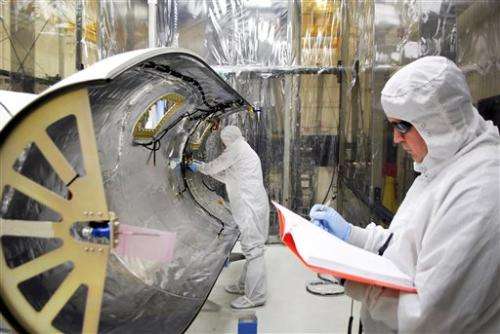NASA set to launch sun-observation satellite

(AP)—NASA on Thursday was poised to launch a satellite to observe a little-understood region just above the surface of the sun.
Unlike a traditional liftoff, the Iris satellite was to cruise into Earth orbit on a Pegasus rocket dropped from an airplane after taking off from the Vandenberg Air Force Base on California's central coast.
The launch was to scheduled to occur at approximately 7:27 p.m. About 100 miles (160 kilometers) off the coast and at an altitude of 39,000 feet (11,880 meters), the rocket was to be released and ignite its engine for the climb to space. If all goes as planned, Iris will be boosted into orbit 400 miles (640 kilometers) above the Earth, unfurl its solar panels and begin its two-year mission after a checkout period.
Previous sun-observing spacecraft have yielded a wealth of information about our nearest star and beamed back brilliant pictures of solar flares.
Iris carries an ultraviolet telescope that can take high-resolution images every few seconds. Its focus is on a little-explored region of the sun that lies between the surface and the corona, the glowing white ring that's visible during eclipses. The goal is to learn more about how this mysterious region drives solar wind and to better predict space weather that can disrupt communications signals on Earth.
"Every time we look at the sun in more detail than we ever have before, it opens up a new window," NASA program scientist Jeffrey Newmark said earlier this week.
The mission is cheap by NASA standards, costing only $182 million, and is managed by the space agency's Goddard Space Flight Center.
Once in orbit, engineers will spend a month making sure Iris is in perfect health before powering on the telescope to begin observations.
The launch was delayed by a day so that technicians at the Air Force base could restore power to launch range equipment after a weekend outage cut electricity to a swath of the central coast.
The Pegasus, from Orbital Sciences Corp. of Dulles, Virginia, is a winged rocket designed for launching small satellites. First flown in 1990, Pegasus rockets have also been used to accelerate vehicles in hypersonic flight programs.
© 2013 The Associated Press. All rights reserved.



















